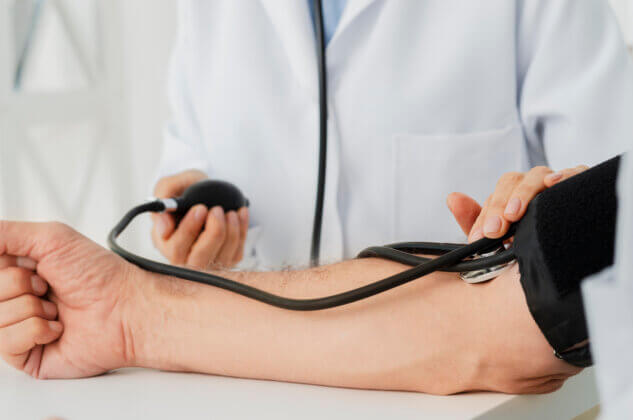
14 September 2023
Vascular Disease Awareness Month is now well underway and we want to continue to shine a light on the different types of vascular disease, and how it affects the general public. When marking the beginning of Vascular Disease Awareness Month, we shared an article which focussed primarily on peripheral arterial disease (PAD), which is the most common vascular disease but we recognise that vascular disease can come in many forms.
Different types of Vascular disease
Vascular disease is described by The Circulation Foundation as “the collective term of diseases of the arteries, veins and lymphatics”. Lymphatics being a part of the immune system. Keeping body fluid levels in balance and defending the body against infections.
In this article, we will be looking at the following:
- Coronary Heart Disease (Ischaemic Heart Disease)
- Aortic Disease
Coronary Heart Disease
Coronary Heart Disease is a major cause of death in the UK and worldwide. It is the term that describes what happens when your heart’s blood supply is blocked or interrupted by the build-up of fatty substances in the coronary arteries. Over time, the walls of your arteries can become furred up with fatty deposits. This process is known as Atherosclerosis and the fatty deposits are called Atheroma.
The main symptoms of Coronary Heart Disease are:
- Chest pain
- Shortness of breath
- Pain throughout the body
- Feeling faint
- Feeling sick
If you develop Coronary Heart Disease, you are at an increased risk of suffering a heart attack or stroke. It is also the most common cause of heart failure. If your doctor feels that you are at risk of coronary heart disease, they may carry out a risk assessment. They will ask about your medical and family history and your lifestyle, and they’ll take a blood test.
Things that increase your chances of developing Coronary Heart Disease include:
- Being over 65 years of age;
- Smoking;
- Having high cholesterol;
- Having high blood pressure;
- Having close relatives who have cardiovascular disease.
Further tests may be needed to confirm coronary heart disease such as a CT or MRI scan. To reduce the risk of getting Coronary Heart Disease, simple lifestyle changes can be made. These include eating healthy, being physically active, giving up smoking and controlling blood cholesterol and sugar levels.
Once you have Coronary Heart Disease, it cannot be cured but treatment can help manage the symptoms and reduce the chance of problems such as heart attacks. Treatments include:
-
- Lifestyle changes such as regular exercise and stopping smoking;
- Medicines prescribed by your doctor;
- Angioplasty (where balloons and stents are used to treat narrow heart arteries;
- Surgery.
Aortic Disease
Aortic Disease are a group of conditions affecting the aorta. This is the largest blood vessel in the body, which carries blood from the heart to the rest of the body.
Aortic Disease includes anything that leads either to progressive enlargement of the Aorta (aneurysm formation) or a tear in the aorta (aortic dissection).
It is not always clear what causes it, but some people are at a higher risk if they:
-
-
- are male and aged 65 or over;
- smoke or used to smoke;
- have high blood pressure;
- have high cholesterol;
- have a close relative who’s had an abdominal aortic aneurysm;
- have coronary or peripheral artery disease (atherosclerosis);
- have chronic obstructive pulmonary disease (COPD);
- have a condition such as Marfan Syndrome.
-
The most common Aortic Disease is an Aortic Aneurysm (swelling of the aorta which may eventually rupture). Aortic Aneurysms are extremely dangerous as they can cause little in the way of symptoms until it is too late.
The main test for Aortic Aneurysm is an ultrasound scan of your tummy. The size ranges for an Aortic Aneurysm are as follows:
-
-
- Small (3cm to 4.4cm or smaller);
- Medium (4.5cm to 5.4cm);
- Large (5.5cm or bigger).
-
An ultrasound scan is offered to all men when they turn 65, as they are most at risk of getting an abdominal aortic aneurysm.
To lower your risk of Aortic Disease, it is again a case of making healthy lifestyle changes such as eating healthy, exercising regularly, losing weight and cutting down on alcohol.
Vascular Disease Awareness Month
With Vascular Disease Awareness Month well underway, here are a few ways you can get involved:
1. Take up the #TheBodyWalk challenge. If you can walk, run, cycle, and/or swim, you can get involved in the #TheBodyWalk challenge. You can help raise awareness about vascular diseases and raise funds to support patients.
2. Help create awareness about vascular diseases. Help raise awareness about vascular diseases. Learn about the risk factors, the causes, symptoms, and ways to prevent them. You can share useful information on social media and to people around you and in doing so, you might be saving a life.


